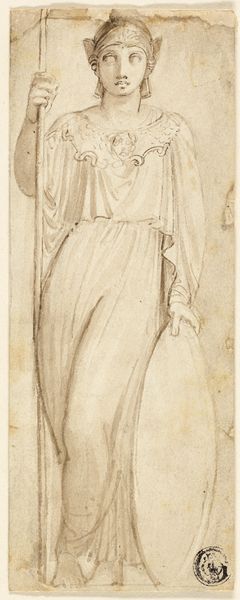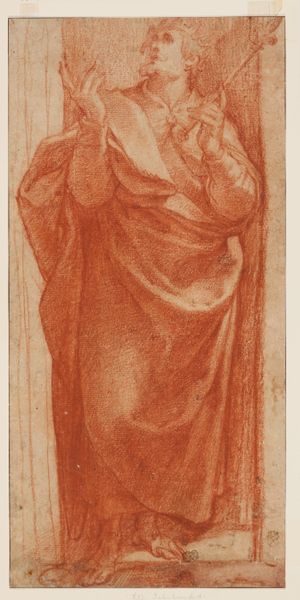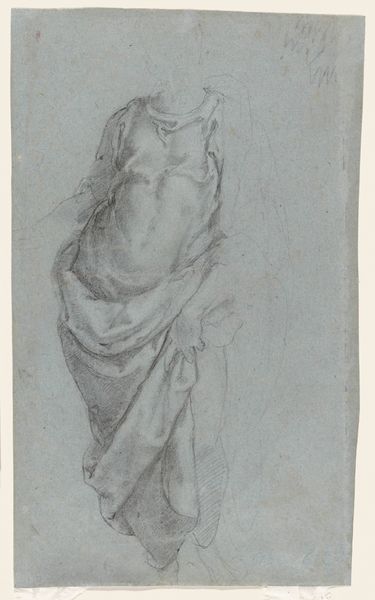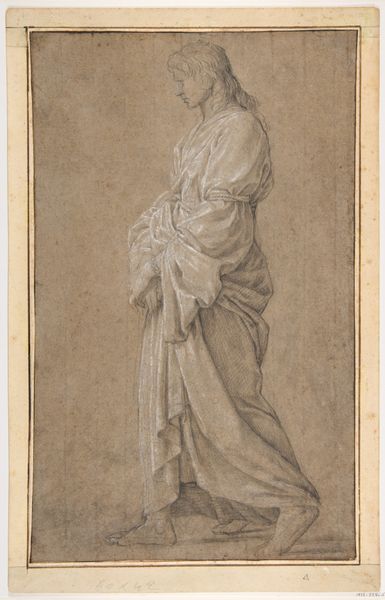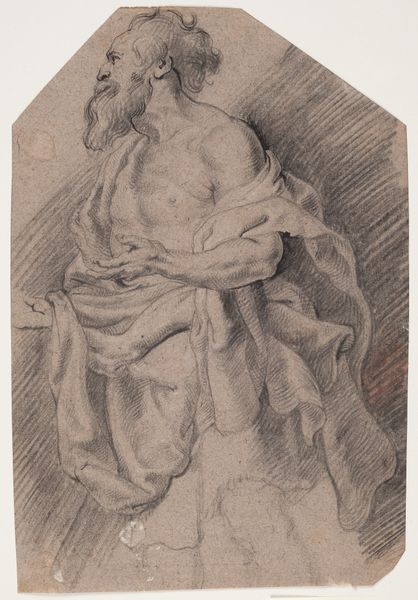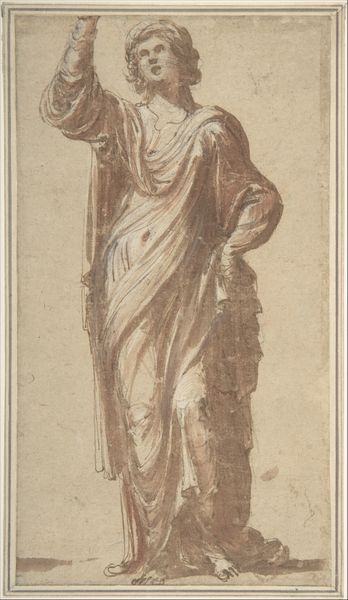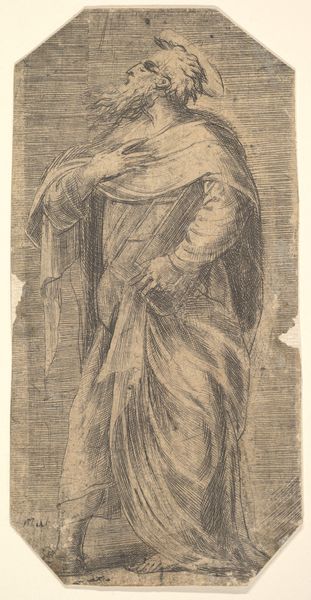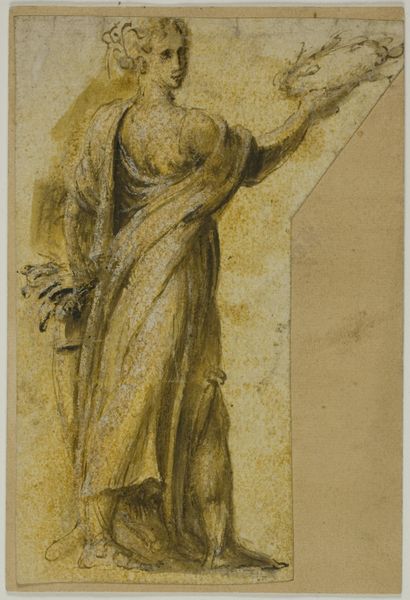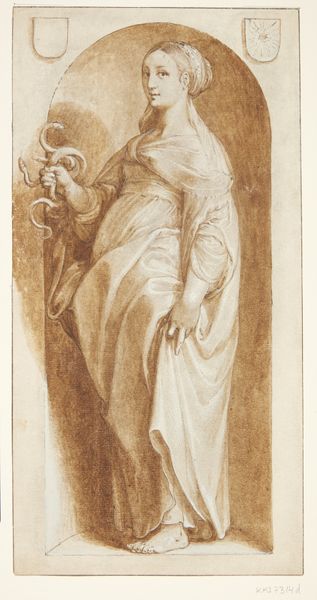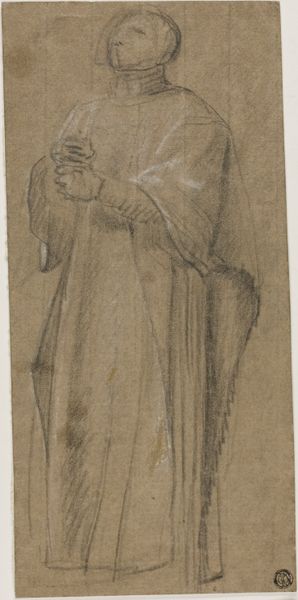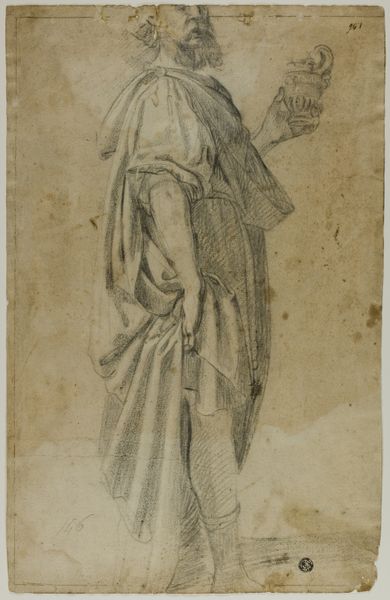
Saint John the Baptist 1500 - 1535
0:00
0:00
drawing, pencil
#
portrait
#
drawing
#
figuration
#
11_renaissance
#
pencil drawing
#
pencil
#
line
#
italian-renaissance
Dimensions: 16 9/16 x 4 5/8 in. (42 x 11.8 cm)
Copyright: Public Domain
Curator: Let’s focus now on Innocenzo da Imola’s “Saint John the Baptist.” It's dated sometime between 1500 and 1535 and resides here at The Metropolitan Museum of Art. Editor: The immediacy is striking. It feels less like a finished piece and more like a thought caught mid-flight. I’m drawn to the sketch-like quality; it invites you into the artistic process. Curator: Precisely. We see a preparatory drawing rendered in pencil, providing insights into Renaissance workshop practices. Consider how artists used such studies to explore form and composition before embarking on larger painted works. Editor: The lines create a sense of movement, of drapery in motion, which adds depth. But the lack of detail in the face, that is interesting. What could be the cause? Curator: One could speculate that it was left unfinished or perhaps the artist concentrated on other compositional concerns. But in the Renaissance, representations of John the Baptist held significant cultural weight. His association with repentance, baptism, and his role as a precursor to Christ, carried considerable socio-political significance. It was often dangerous to portray him. Editor: Looking at the work now from a pure composition angle, his raised finger creates an almost perfect vertical line which is only contrasted with the cascading robe lines. It leads the eye down the picture plane, from top to bottom in this perfect elegant swoop. Curator: And that very pose echoes classical oratory gestures – consider what this artistic vocabulary suggests to the viewer familiar with those conventions! I wonder if da Imola would approve of the audience reaction in front of him. Editor: I'm left pondering how much intention went into these elements we dissect. Did the artist consciously apply those artistic choices, or did it stem more naturally? Curator: Whether fully calculated or intuitive, these qualities elevate the artwork beyond a mere study, capturing a fleeting glimpse into the intersection of art and societal concerns in the Renaissance period. Editor: Ultimately it's the interplay between intention, technique, and reception that makes encountering the piece such a captivating artistic journey.
Comments
No comments
Be the first to comment and join the conversation on the ultimate creative platform.
